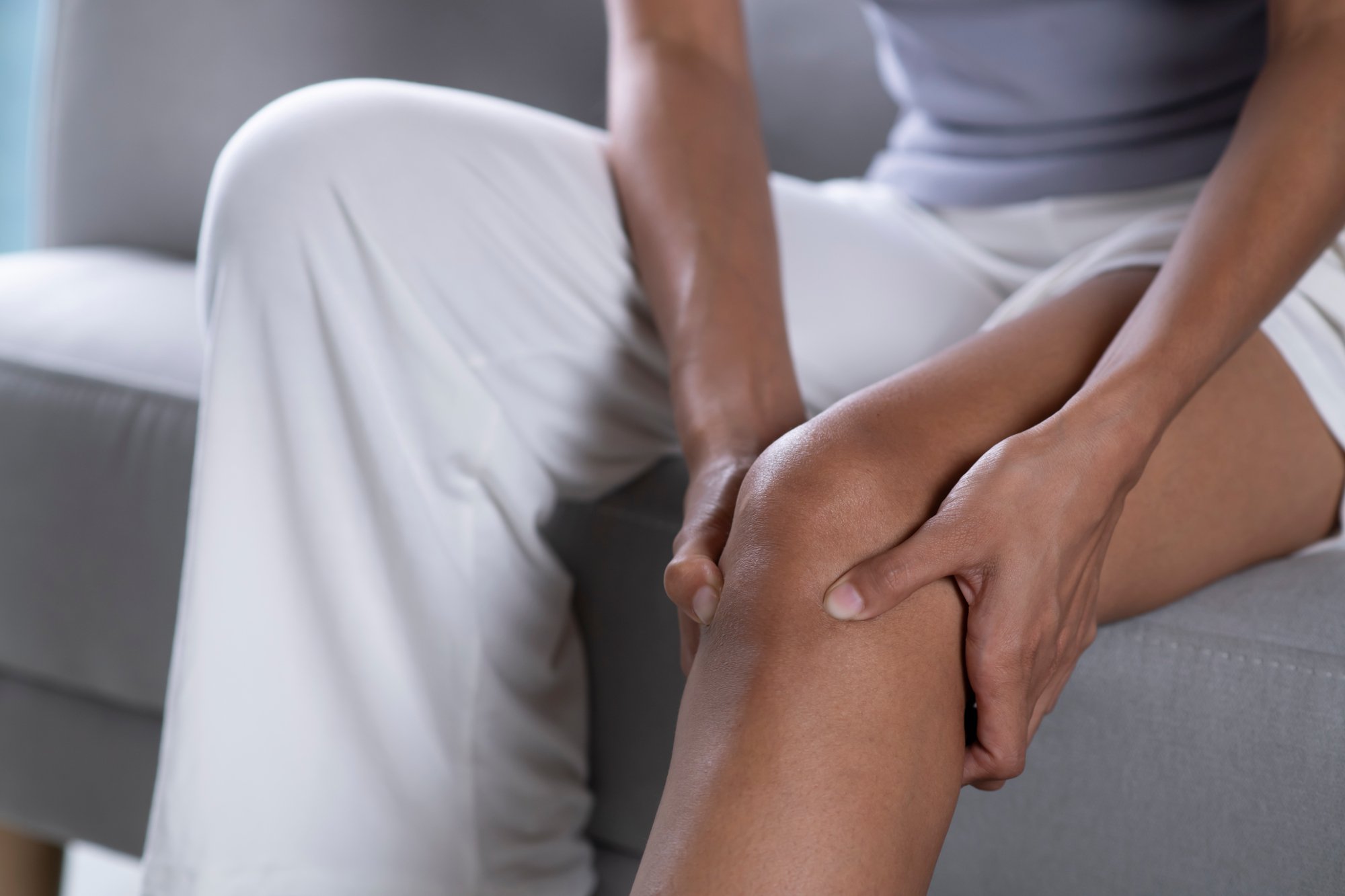What is Jumper's Knee? 5 Signs You Have It and What You Can Do
Have you ever spent a day training for your sport of choice, only to discover a harsh pain in one of your knees? You might be experiencing a tendon issue known as patellar tendonitis, or jumper’s knee.
Jumper’s knee is an injury caused by overuse and excess strain on the patellar tendon, found in your knee joint. This tendon is located just underneath your kneecap and connects your quads to your shinbone. The patella plays a large part in the flexing and contracting of your knee joint—an essential movement for activities like running and jumping.
Jumper’s knee is most commonly seen in athletes who spend a lot of time running and jumping. Activities at a higher risk for this form of tendonitis include:
Basketball players
Long distance runners
Track and field athletes
Volleyball players
Cyclists
While this injury is most commonly seen in athletes, it’s also completely possible to develop it without participating in sports—so don’t assume it’s not jumper’s knee just because you don’t do much jumping!
How to tell if it's jumper's knee
Jumper’s knee is characterized by excess strain in the patellar tendon near the kneecap, usually caused by overuse or poor form. As this goes on, inflammation can build up in the tendon, leading to more pain and reduced mobility. If left untreated for too long, jumper’s knee can even progress to a torn tendon, which is an extremely long and painful injury to recover from.
With all that said, jumper’s knee is by no means a death sentence for your athletic or movement ability, and by catching the signs of it early, you can protect yourself from further injury and get back to your usual activities sooner! Here are five signs that you’re developing jumper’s knee.
1. Pain and tenderness to the touch in your patellar (kneecap) region
The most common way people discover a case of patellar tendonitis is when they notice pain and tenderness when touching their kneecap area. In less serious cases, you may not notice as much pain while moving, but realize that the area is quite sensitive to the touch.
It can be tempting to carry on with your usual athletic activities if you notice this symptom, since the pain is usually manageable to start. However, this is strongly advised against, since the condition is almost guaranteed to worsen without rest.
2. Tenderness around the back of your knee
Although the patellar tendon runs down the front of the knee, you may notice some pain and tenderness on the back of your knee if your case of patellar tendonitis is advancing. Because the body has so many interdependent parts, inflammation and strain in one area can quickly spread to another, leading to pain in more parts of the joint.
3. Inflammation
Swelling and inflammation is another telltale sign of a problem with your knee tendon. If you notice swelling anywhere around your knee (even if it’s only a little bit) and a lack of usual mobility in the joint, it could be a sign that the tendon is becoming strained and needs rest to heal.
4. Pain during athletic activities and motions
Of course, many people notice that something is wrong with their body when using it to its full potential. For instance, if you’re a basketball player, you might start to notice pain in your knee when running, changing directions, and jumping to shoot. In cases of jumper’s knee, it’s most common to experience pain when kicking, running, and bending/extending your knee, as these motions depend on your patellar tendon the most.
5. Bruising and discolouration
In extreme cases of patellar tendonitis, you may begin to notice bruising or redness around the kneecap region. This is less common with gradual cases of jumper’s knee, which will present symptoms over time. We see bruising of the knee joint more commonly after acute, serious injuries to the patellar tendon.
How is jumper’s knee treated?
If you’ve noticed any of the above symptoms in your knee joints, you’re likely wondering what your options are. After all, so many of us depend on physical activities and sports to keep our minds and bodies healthy, and functioning knees are crucial for almost all athletics.
Fortunately, jumper’s knee can be treated, and the more promptly you do so, the more likely you are to make a full and speedy recovery. Here are some of the ways jumper’s knee can be treated:
Rest
Whether your case of jumper’s knee is major or minor, rest and relaxation is the best way to heal a strained patellar tendon. It can be tough to take time off from your favourite sports and activities, but it’s completely necessary to avoid even longer downtime later on. You’ll need to put a pause on practices, training, and any other knee-related exercises until the pain fades and your full mobility returns.
Medications
When it comes to using medications, our staff at Triumph Physio often recommend using topical anti-inflammatories such as Voltaren or Diclofenac prescription cream. Since the tendon is very superficial, topical anti-inflammatories are a great treatment, targeting the meds more locally and removing the work required from the digestive system.
The R.I.C.E. method
R.I.C.E. stands for ‘Rest, Ice, Compression, Elevation’. It’s a four-step treatment process that has proven results for countless physical injuries—strained patellar tendons are no exception. It’s a fantastic and non-invasive way to reduce pain and inflammation in people with jumper’s knee, and will likely be one of your physical therapist’s first attempts at treatment.
Knee strengthening exercises
When the initial pain and swelling have gone down, it’s time to address the root cause of the issue. Physiotherapists can help you to strengthen the muscles that support your knee joint, reducing your risk of future injury while decreasing pain at the same time.
Reinforcement/bracing of the knee
Sometimes additional support is needed to protect the knee joint from a worsening injury. Some athletes make use of knee braces or athletic tape to provide external support to the joint. This will stabilize the patella (kneecap) and make it safer for athletes to begin returning to their training.
Anti-inflammatory injections
In more serious cases of patellar tendonitis, an inflammatory injection is sometimes necessary to reduce swelling and pain. These injections are usually either polidocanol or corticosteroids, either of which may help accelerate the healing process.
Surgical intervention
Surgery is typically reserved for only the most serious of patellar tendonitis cases. Surgery for this condition involves removing damaged tissue structures from the area around the kneecap, or potentially removing and realigning parts of the kneecap that are placing excess strain on the tendon.
Getting back on the move with Triumph Physio
If you’re an athletic person, you know exactly how frustrating it can be to be limited by an injury such as jumper’s knee. Fortunately, by knowing the early signs of this condition, you can catch it sooner and begin the resting and healing process, improving your odds of a swift recovery and getting back on the move sooner.
Contact us today if you have more questions about jumper’s knee, other forms of tendonitis, or if you’re ready for an initial assessment with one of our staff!
Creative Commons Attribution: Permission is granted to repost this article in its entirety with credit to Triumph Physio and Wellness and a clickable link back to this page.

